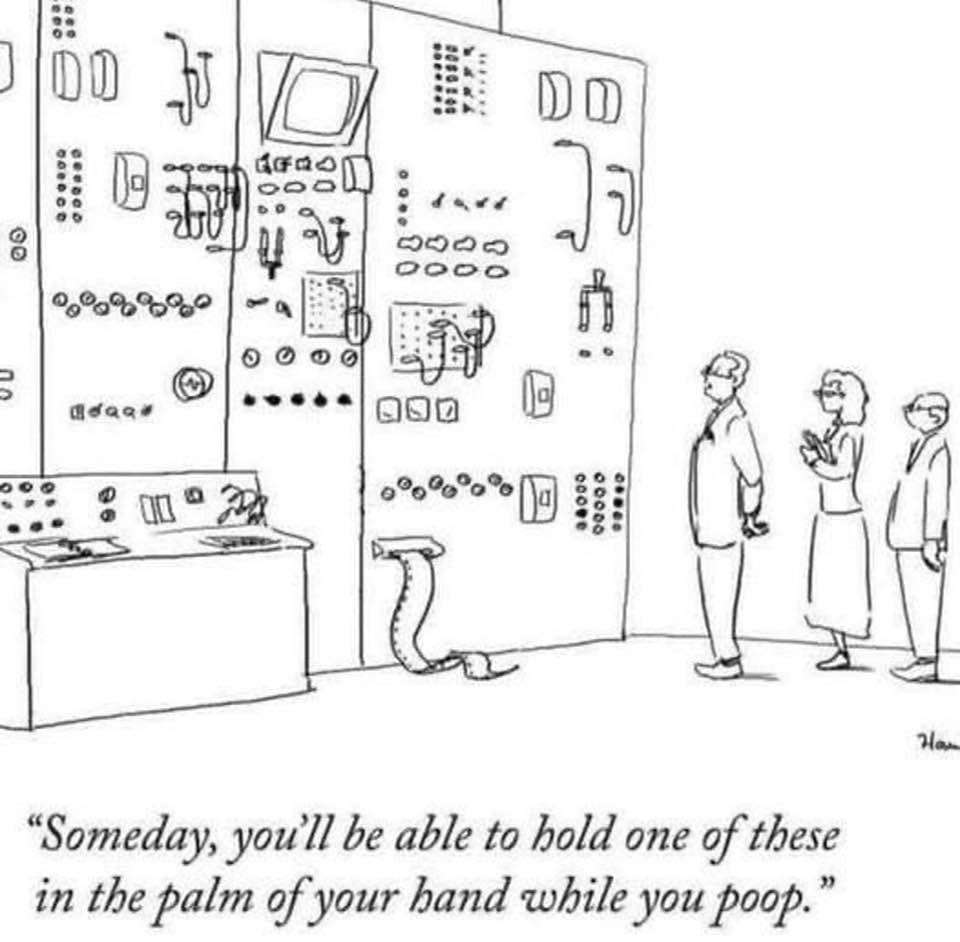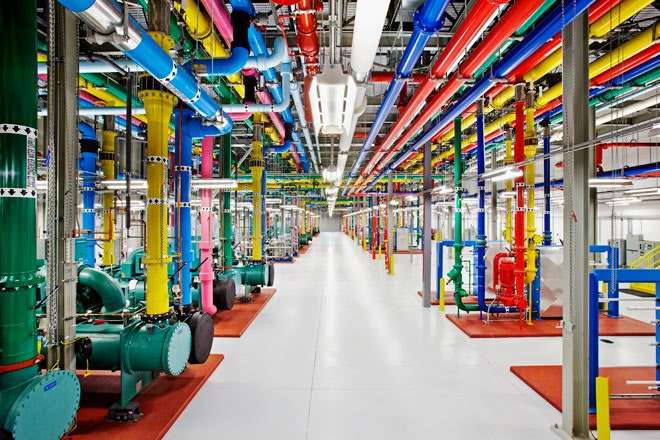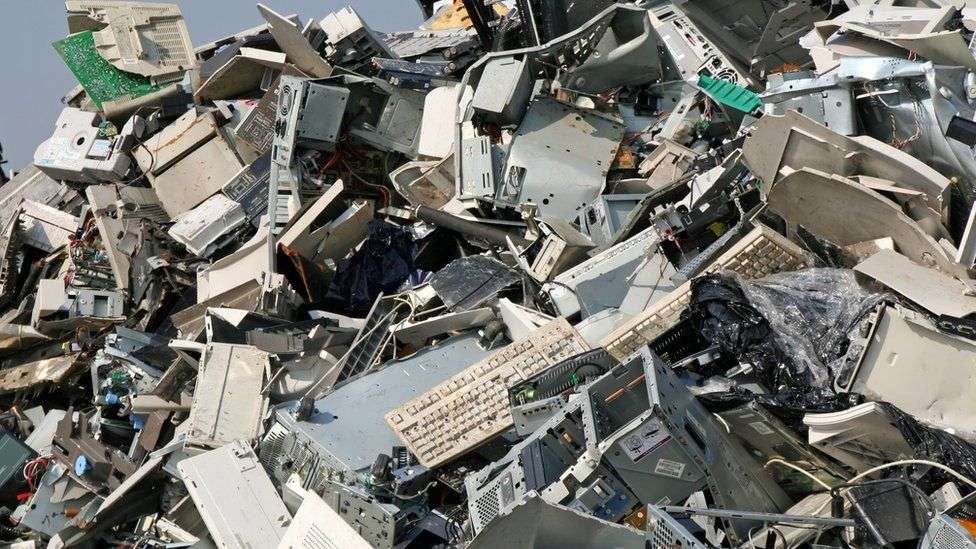OUR DIGITAL WORLD IS NOT SO CLEAN
Allan Maynard, MSc. – October 2021

A 4 MINUTE READ — The internet and associated technologies have taken over our lives with an ecological impact that is impossible to ignore.
This is the next article in the series – “FOOTPRINTS – By the numbers” – addressing the environmental impact (or FOOTPRINT) of some of our normal, everyday lives.
When I was growing up in the 1950s – phones were attached to the wall with the phone lines shared with neighbours – “the party line” as it was called. The first computer I encountered was in 1966 at Simon Fraser University. It was the size of a living room and basically processed calculations. Fast forward to now.
In the space of 50 years, the digital world has grown to become crucial to the functioning of society. Computer processing power has increased a staggering 1 trillion times between the early 80s and now. The revolution has proceeded at breakneck speed — approximately 4.1 billion people, or 53.6% of the global population, now use the internet. No technology has reached more people in as short a space of time and it is far from finished.
The benefits of digital technology are immeasurable – society can no longer carry on without it. However, the negative aspects of the internet are also many and growing – One of the many significant negative aspects is — THE ENVIRONMENTAL IMPACT.

CARBON FOOTPRINT
Every single search query, every streamed song or video and every email sent, billions of times over all around the world all adds up to an ever-increasing global demand for electricity by the central servers and data storage centers. Our increasing reliance on digital tools has an environmental impact that’s becoming increasingly harder to ignore.
One of the difficulties in working out the carbon footprint of our internet habits is that few can agree on what should and should not be included. In reviewing the literature though – most reports calculate that the carbon footprint of our gadgets, the internet and the systems supporting them account for about 3.4 to 4% of global greenhouse emissions – comparable to the global airline industry. These emissions are expected to double by 2025.
Most significant in energy use is cryptocurrency. Solving the equations to acquire new bitcoins (referred to as “mining”) requires large volumes of computer hardware that frequently overheats and is extremely energy intensive. Estimates put the annual energy usage of bitcoin mining equivalent to that of Sweden or Malaysia.
And as these “mines” multiply, their operations begin to stretch and even overwhelm national power grids. Iran banned bitcoin mining last month after it led to blackouts. Multiple provinces in China, one of the world’s biggest producers of bitcoin, banned mining too, leading miners to relocate their hardware to sites of more traditional underground extraction in Canada and South Dakota.
POLLUTION FROM PRODUCTION OF OUR DEVICES
For their production, green energy and digital technologies require a variety of precious and rare earth metals. For the most part, they exist in minute quantities in metal ores that also contain more abundant metals such as copper. For example, a tonne of rock produces ONLY four to seven grams of the precious metal – platinum (about 0.0004 to 0.0007 %). The extraction of these minerals is difficult and complex, requiring abundant labour, chemicals, water, and land. Two examples (of many) are provided.
Example 1 – China produces 45% of the world’s metals and 95% of some of the key rare earth metals. It is also now the biggest consumer of metals in the world. China also has some of the most polluted rivers and land areas in the world due to this prominence. From north near the Mongolian border to south in Guangdong, China is struggling to clean up the environment polluted by mining. The clean-up process is expensive and time-consuming, and some say it could be 50-100 years for the environment to recover. A 2019 US Army report highlights a central issue driving rare-earth pollution in China: “China is less burdened with environmental or labor regulatory requirements that can greatly increase costs incurred in mining and manufacturing rare-earth products.”
Example 2 -In Malaysia, Mitsubishi Chemical is now engaged in a $100 million cleanup of its Bukit Merah rare earths processing site, which it closed in 1992 amid opposition from local residents and Japanese politicians and environmentalists. It is one of Asia’s largest radioactive waste cleanup sites, and local physicians said the thorium contamination from the plant has led to an increase in leukemia and other ailments.
WASTE FROM DISPOSAL (also called E-Waste)

An international study by Global Waste (see link below) concluded that the world dumped a record 53.6 million tonnes of e-waste last year. To put that in perspective this is equivalent to the weight of 350 cruise ships the size of the Queen Mary 2, To make matters worse, just 17 per cent (approximately) of it was recycled, meaning that an estimated $57 billion worth of gold, silver, copper, platinum and other high-value, recoverable materials used as components were mostly dumped or burned rather than being collected for treatment and reuse.
Planned Obsolescence – One important factor exacerbates the issue of E-Waste – Planned Obsolescence. This is the well documented fact that some of the world’s biggest companies have been selling products either knowing full well that they will only last a couple of years or having deliberately built a short lifespan into the item or its software. As an example, in the US – Apple paid millions to users related to allegations that software updates caused older iPhones – such as the iPhone 6, 6s Plus, 7 and 7 Plus – to slow down.
This is perhaps why the average time an individual keeps a smartphone is reckoned to be between two and three years. Astonishingly, according to EU research, the average lifetime of desktop printers is a mere five hours and four minutes of actual printing time. This is simply scandalous. However, a push back movement is developing – see link below on the “Right To Repair” movement.
While the overall damage done to the environment from all the unrecycled waste may be incalculable, the message from the Global Waste report was conclusive: “The way in which we produce, consume and dispose of e-waste is unsustainable.”
IS IT WORTH IT?

One wonders – where is all this headed? Even though we managed in the past, there is no doubt our world can no longer function without the internet and the associated technology. It allows people to be connected globally, it allows much better access to education, it allows rapid processing of data and an unprecedented ability for predictive science. Data storage and retrieval is many orders of magnitude better than before such digital powers were commonplace.
But in my view – and shared by many evaluating society — it is TOO MUCH. Do we need technology to open and close our curtains, to track the ‘best before’ dates of food in our fridges or to continuously monitor our back yards with a video cam? Do we need to see what our friends are having for dinner or watch silly pet videos or teenagers dancing in what should be their private spaces? Even more detrimental is the accelerated spread of misinformation and disinformation. I firmly believe that without the nonsense on Facebook etc., there would be much less resistance to the safe and effective CoVid vaccines.
Digital technologies have given rise to a new machine-based civilization that is increasingly linked to a growing number of social and political maladies. Accountability is weak and insecurity is endemic, creating disturbing opportunities for exploitation. Moreover, society is well entrenched in an era of surveillance capitalism. The companies at the core of the social media revolution — Google, Facebook, YouTube, Twitter and the like — vacuum up our personal data turning us into products for sale.
THE ANSWER – A BIG RESET: The manufacture, use and disposal of technology products is unstainable. Moreover, the benefits to society are being offset by many detrimental aspects. I believe that less is more. A great reset is needed to restore the initial intention of the internet. There is a very definite need for this massive industry to be much better regulated in all ways. Ron Deibert is Chair of the “The Citizen Lab”, an interdisciplinary laboratory based at the Munk School of Global Affairs at the University of Toronto. I agree with this conclusion in a CBC article about his research “In order to combat authoritarian practices, environmental degradation, and rampant electronic consumerism, Deibert urges restraints on tech platforms and governments to reclaim the internet for civil society” (see link below to Ron Deibert’s book).
https://www.myclimate.org/information/faq/faq-detail/what-is-a-digital-carbon-footprint/
https://www.army.mil/article/227715/an_elemental_issue
https://globalewaste.org/publications/
https://www.cbc.ca/news/science/global-ewaste-monitor-2020-1.5634759
https://www.theguardian.com/technology/2020/mar/02/apple-iphone-slow-throttling-lawsuit-settlement
https://www.theguardian.com/technology/2020/apr/15/the-right-to-repair-planned-obsolescence-electronic-waste-mountain

What an insightful read Allan. Thank you so much for opening my understanding of these timely subjects you choose to write.
Hi Allen… Well said. The stupid people of this ”’ Generation”” don’t seem to understand technology and consumerism are a big part of the worlds troubles. Judging by the piles of paper around here. Printers are a good example. cheers.